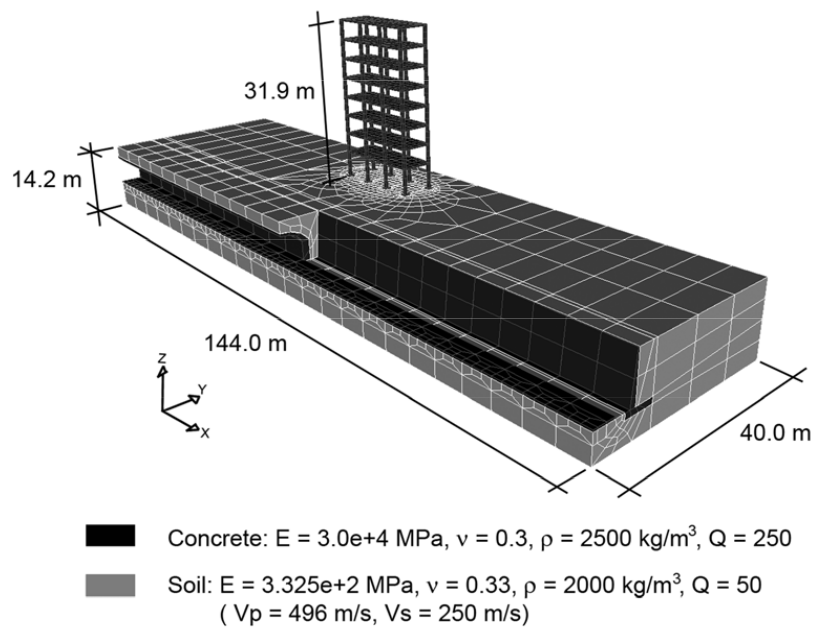Stupazzini, M., Paolucci, R., (2010). Ground motion induced by train passage in urban area, in Proceedings of ISMA2010-USD2010 Conference, pp. 3547–3558, Editors: Sas, P. and Bergen, B.
Paolucci R., A. Maffeis, L. Scandella, M. Stupazzini, M. Vanini, (2003). Numerical prediction of low-frequency ground vibrations induced by high-speed trains at Ledsgaard, Sweden, Soil Dynamics and Earthquake Engineering, Vol. 23, pp. 425-433.
Paolucci R., D. Spinelli, (2006). Ground motion induced by train passage, ASCE Journal of Engineering Mechanics, Vol. 132, n. 2, 201-210.
Introduction
Numerical Model
A sketch of the sample problem considered in this study is shown. It consists of a eight-story building located close to a railway line. For sake of comparison and to show the capability of handling different configurations, we have considered the following cases:
- surface railway line (denoted by “s” in the following),
- underground railway line (denoted by “u”),
- the intermediate situation where the line is partly underground and partly located in a trench delimited by a retaining wall (denoted by ”u-s”).
Our objective is to study the vibrations induced in the soil and in the building by the passage of a two-carriages train, moving with speed c = 70 km/h = 19.4m/s.


